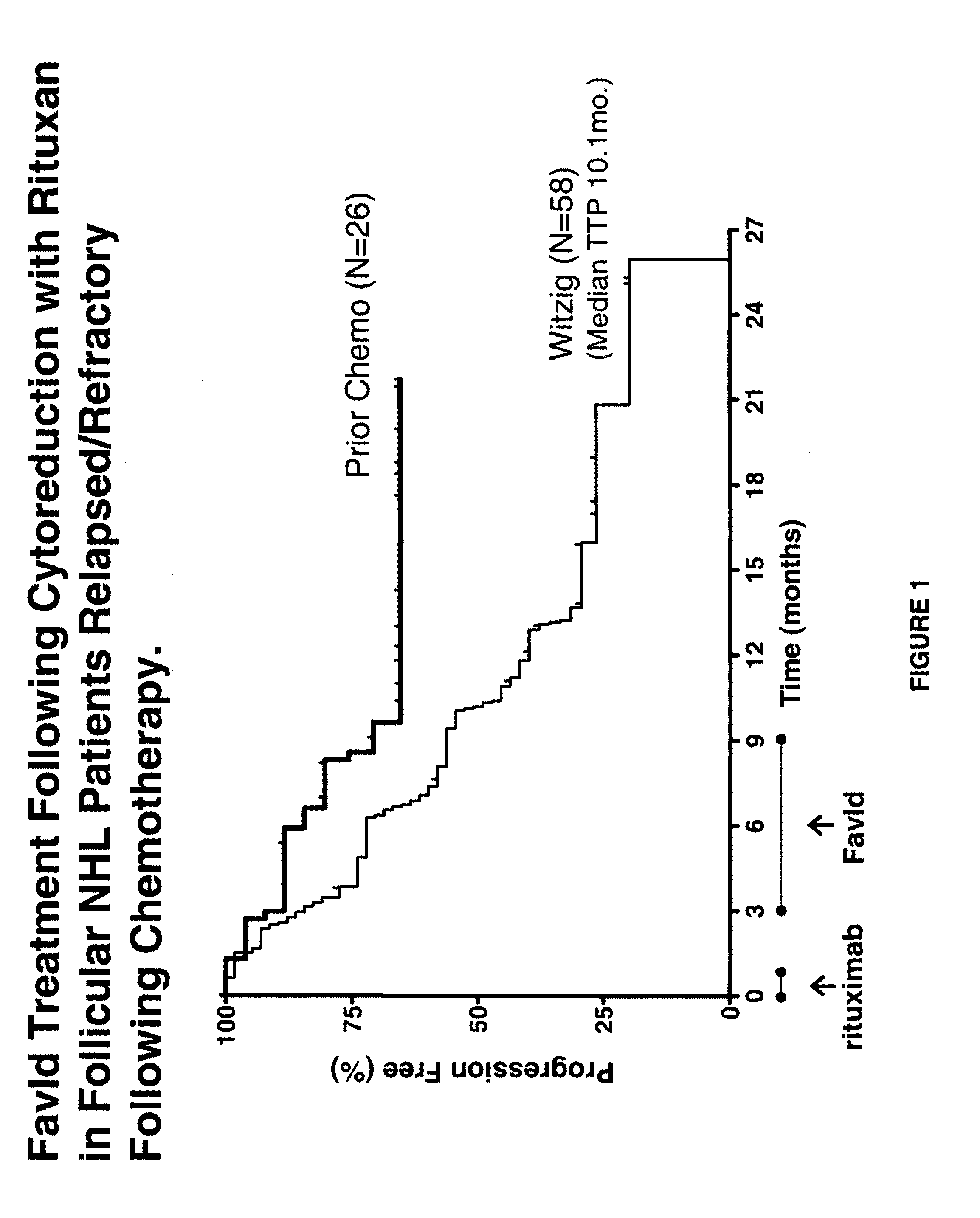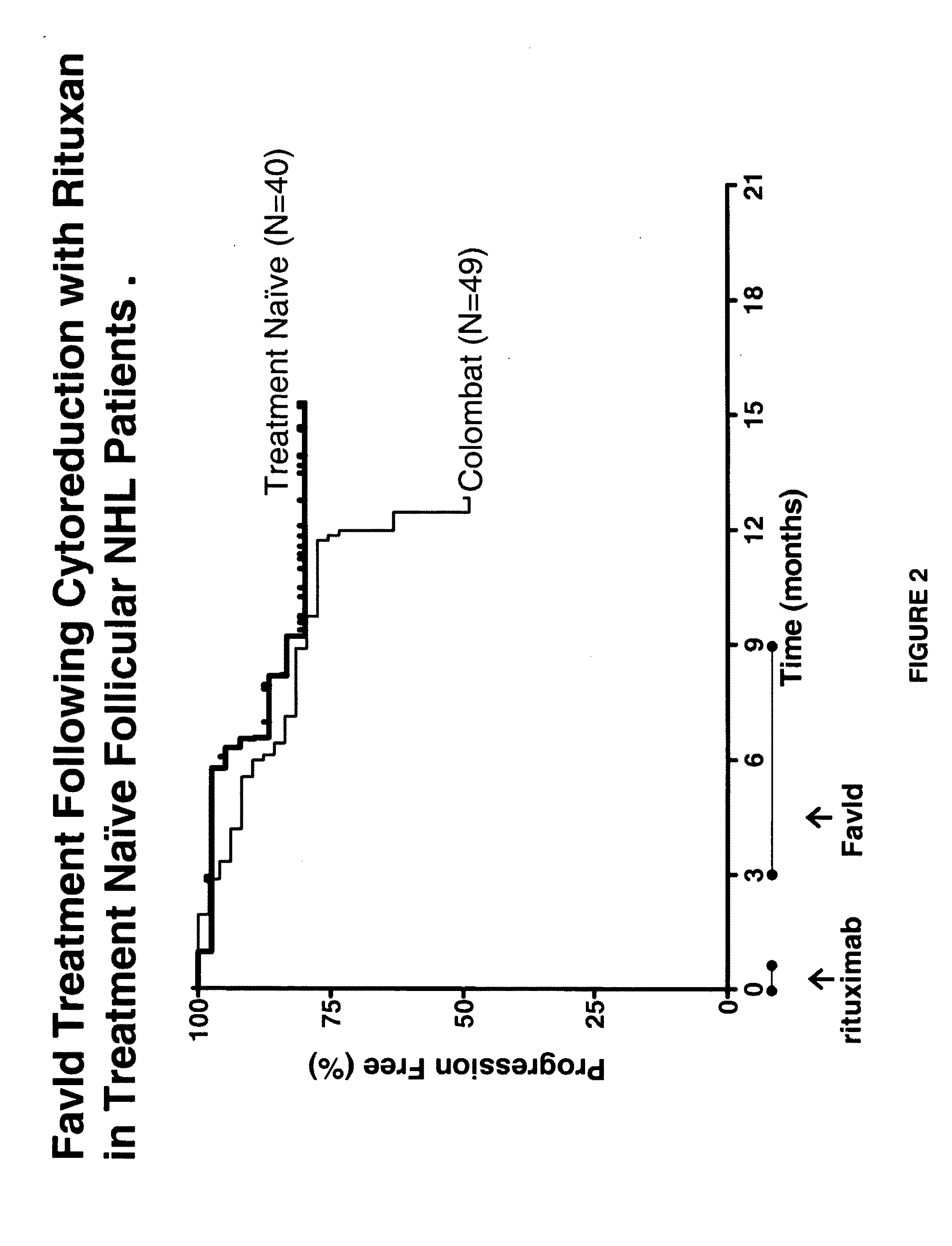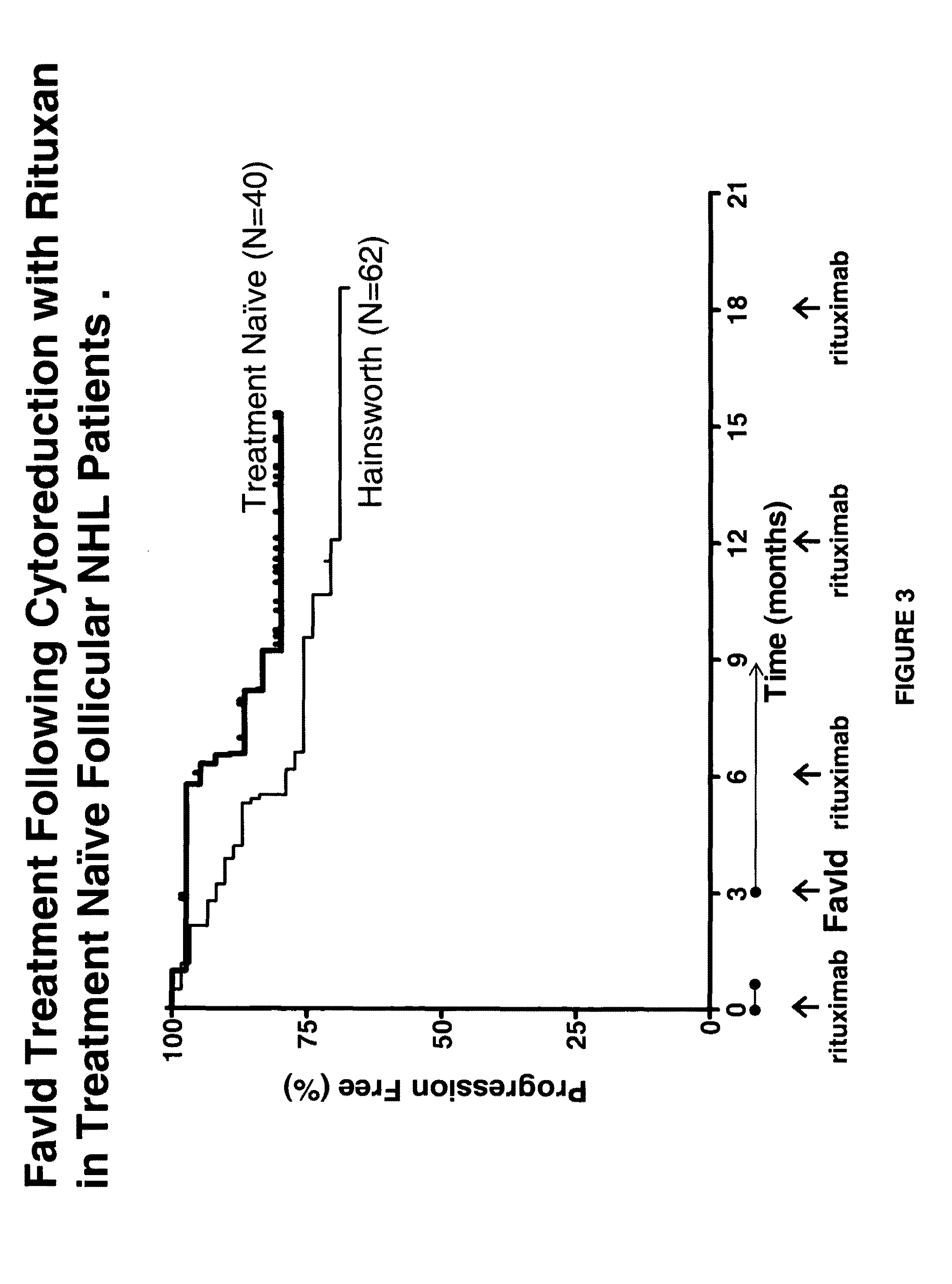Altering a b cell pathology using self-derived antigens in conjunction with specific-binding cytoreductive agent
a technology of b cell pathology and specific binding cytoreductive agent, which is applied in the field of immunotherapy, can solve the problems of temporary remission, poor clinical efficacy, and laborious first attempts at bringing this idea and technology into the clinic, and achieves positive results in roughly half of patients
- Summary
- Abstract
- Description
- Claims
- Application Information
AI Technical Summary
Benefits of technology
Problems solved by technology
Method used
Image
Examples
example 1
Treatment of a B-Cell NHL Patient Relapsed / Refractory from Prior Lymphoma Therapies Using a Specific Binding Cytoreductive Agent and Autologous Id Protein
Study Rationale
[0161]Rituxan® is approved for the treatment of patients with relapsed or refractory, low-grade or follicular, CD20-positive, B-cell non-Hodgkin's lymphoma (See, e.g., McLaughlin P, et al., “Rituximab chimeric anti-CD20 monoclonal antibody therapy for relapsed indolent lymphoma: half of patients respond to a four-dose treatment program,” J Clin Oncol. (1998) 16(8):2825-33). Its use in conjunction with immunizations of Id-KLH plus GM-CSF was studied as set forth below. In mouse model systems, there is evidence that for immunizations that induce strong T-cell responses, such as Id-KLH plus GM-CSF, depleting the host of B-cells could actually increase the T-cell response to the immunogen. (Qin Z, et al., “B cells inhibit induction of T cell-dependent tumor immunity,” Nature Med. 4(5): 627-30(1998); Monach P A, et al., “...
example 2
Treatment of a B-Cell NHL Patient with No Prior Lymphoma Therapy Using a Specific Binding Cytoreductive Agent and Autologous Id Protein
[0223]FavId™ is a tumor-specific B-cell recombinant immunoglobulin idiotype (Id) protein which is complexed with KLH and used for the induction of active immunity in patients with indolent NHL.
[0224]Objective:
[0225]This study was conducted to evaluate the ability of FavId™ to increase or prolong the objective response rate following rituximab compared to historical data for rituximab alone from Witzig et al. and to evaluate the ability of patients treated with FavId™ following rituximab to mount an immune response to KLH and idiotype.
[0226]Eligibility:
[0227]Patients with grade 1 or 2 follicular NHL who were treatment naïve.
[0228]Treatment:
[0229]As described supra in Example 1, Rituximab 375 mg / m2 was given weekly for 4 weeks. Two months following the last dose of rituximab, FavId™ (1 mg) treatment commenced with FavId™ administered s.q. once a month ...
example 3
Use of Dendritic Cells as Part of the Combination Therapy
[0233]Dendritic cells have been shown to play a critical role in the initiation of immune responses. To take advantage of this, several groups seeking to immunize a patient with cancer antigens have withdrawn dendritic cells from a patient, pulsed them with an immunogen, and re-inoculated them into the patient. Indeed, one group has referred to them as “nature's adjuvants” ((Thurner B, et al., “Vaccination with mage-3A1 peptide-pulsed mature, monocyte-derived dendritic cells expands specific cytotoxic T cells and induces regression of some metastases in advanced stage IV melanoma,” J Exp Med. 190:1669-1678 (1999)) (citing to Schuler G & RM Steinman, “Dendritic cells as adjuvants for immune-mediated resistance to tumors,” J Exp Med., 186(8):1183-87 (1997)).
[0234]Among the cancers studied are: B cell lymphomas (Hsu, F J, et al., Vaccination of patients with B-cell lymphoma using autologous antigen-pulsed dendritic cells. Nat Med...
PUM
| Property | Measurement | Unit |
|---|---|---|
| temperatures | aaaaa | aaaaa |
| time | aaaaa | aaaaa |
| time | aaaaa | aaaaa |
Abstract
Description
Claims
Application Information
 Login to View More
Login to View More - R&D
- Intellectual Property
- Life Sciences
- Materials
- Tech Scout
- Unparalleled Data Quality
- Higher Quality Content
- 60% Fewer Hallucinations
Browse by: Latest US Patents, China's latest patents, Technical Efficacy Thesaurus, Application Domain, Technology Topic, Popular Technical Reports.
© 2025 PatSnap. All rights reserved.Legal|Privacy policy|Modern Slavery Act Transparency Statement|Sitemap|About US| Contact US: help@patsnap.com



